Reptiles - Intriguing Lil' Critters |
Chuckwalla
Found in the southwestern US and northern Mexico, the chuckwalla prefers rocky areas near scrub brush. It’s a husky, wide-bodied lizard ranging in size from 11 to 18 inches. The male is larger and more showy than the female. Sporting a black head and legs, the male flaunts a body flamboyantly speckled in red and pale yellow. The female wears pale yellow or gray. Both have a very stout tail. The chuckwalla dines primarily on leaves, fruit and flowers along with occasional insects. Long-lived, over 25 years, the lizard spends much of its time basking in the sun. It needs to raise its body temperature to at least 90 degrees before eating for proper metabolism. This lizard hibernates during cool months and emerges in February. Harmless to humans, the chuckwalla will wedge its body into a crevice when alarmed and inflate its lungs to prevent removal.
|
|
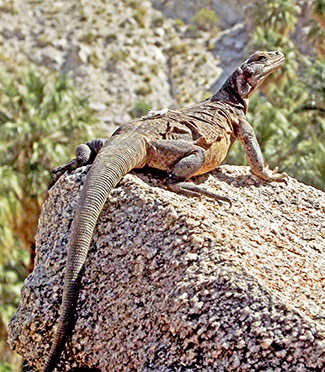 |
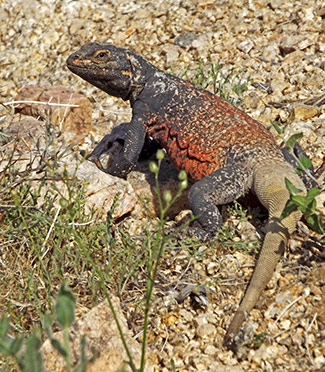 |
Female Chuckwalla |
Male Chuckwalla |
Collared Lizard
The collared lizard resides in the Mojave and Sonoran Deserts of the southwestern United States and northern Mexico. It frequents rocky canyons and washes scattered with boulders and is recognized by the two dramatic black collars around its neck. A true predator, this thirteen inch carnivore eats smaller lizards and various insects. There are two facts about the collared lizard that differentiate it from most other lizards. With long, extra strong hind legs, this lizard can run on just its 2 rear legs. And unlike most lizards, its tail does not detach easily and does not grow back. |
|
Southern Alligator Lizard
This highly noticeable species makes a bold, snake-like appearance with a long body, large head, pointed snout, short legs, and a tail that is often twice its body length. The black and white crossbars along its entire length, yellow eyes, and broad forked tongue complete the viper look. Being 3 to 7 inches long, this lizard can give you quite the start until you realize what it is. Enjoy seeing it because it is so distinctive-looking, curious and feisty and will often let you get within a foot or so if approached slowly. Never handle it though as it will attempt a painful bite. |
|
|
Western Fence Lizard
Frequently seen sunning itself on stumps and fences by a trail, this common species is easily spotted. Between 2 and 3 inches long with dark brown or black blotched patterns covering it's back, the fence lizard is very recognizable. Sporting a blue patch on the throat and blue patches on the underside, this gentle but curious lizard is often called a "Blue Belly." |
|
|
Horned Lizard
A unique specimen, this unusual lizard wears two horns behind its head and two rows of fringed scales down its sides. Flat-bodied, and colored a mottled brown, grey or yellowish-beige, the horned lizard is 2 to 4 inches long. Often called a "Horned Toad," this is no toad but a true lizard. It is very shy and camouflages itself very well so consider yourself fortunate to actually see one in the wild. (Note the photo.)
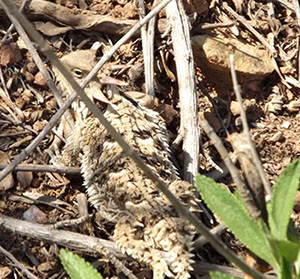
|
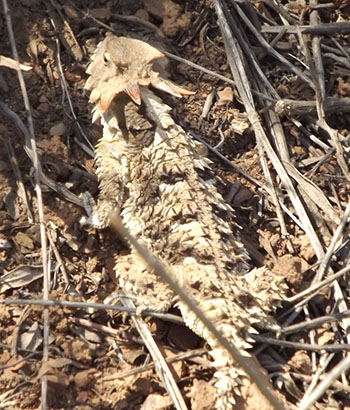
|
|
San Diego Gopher Snake
Stretching 31 to 55 inches, this large snake can be active year round and at any time of day or night. Common in most snake-type habitats, it is recognizable by its black or brown blotched scales topside, yellowish sides, and orange colored eyes. The gopher snake may hiss loudly and vibrate its tail when annoyed.
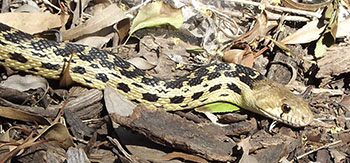
|
|
© Roving Image 2017
Note: All images on this web site are copyrighted.
They cannot be copied, reproduced or used in any way without the author's permission. |
|
